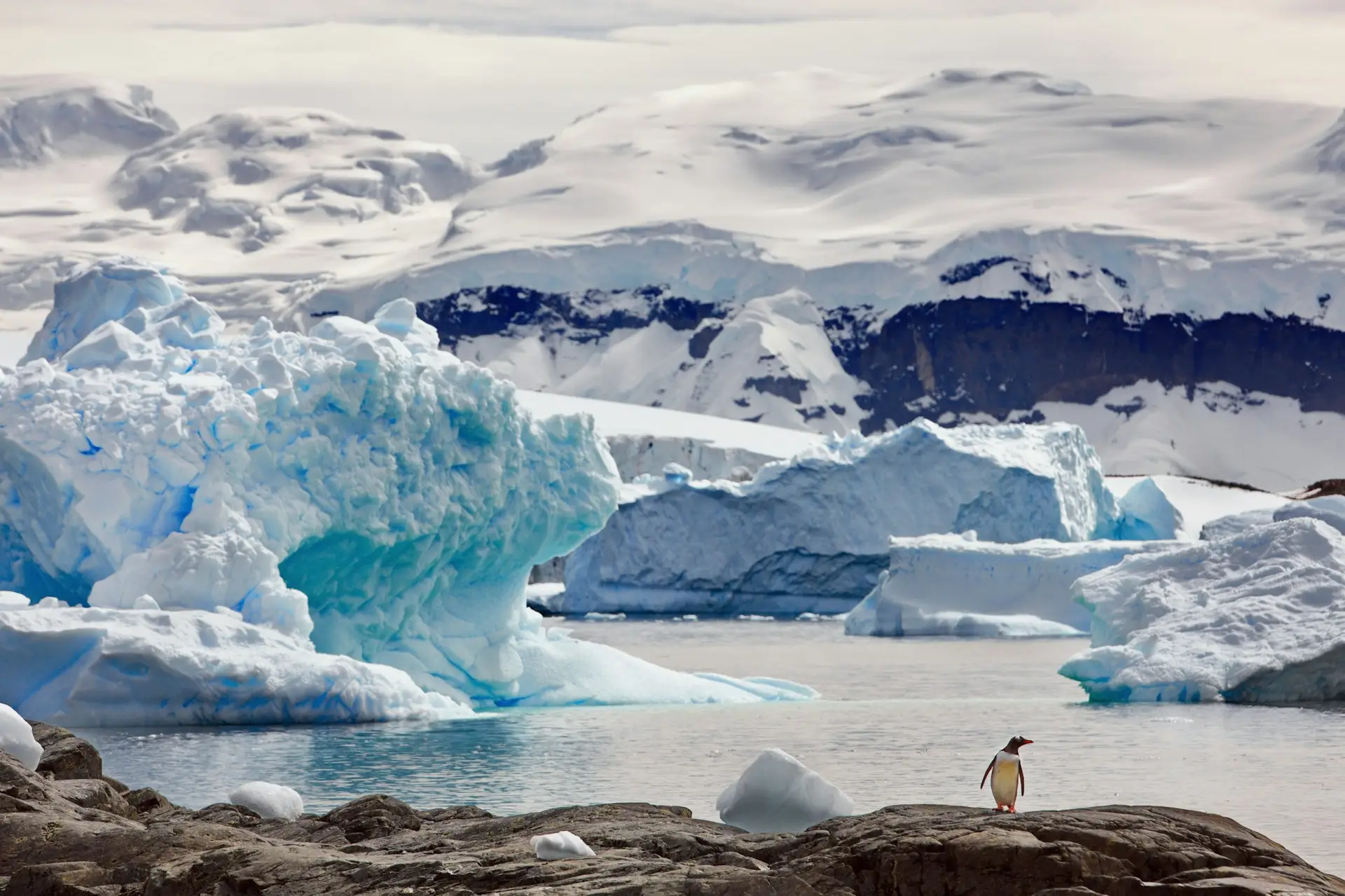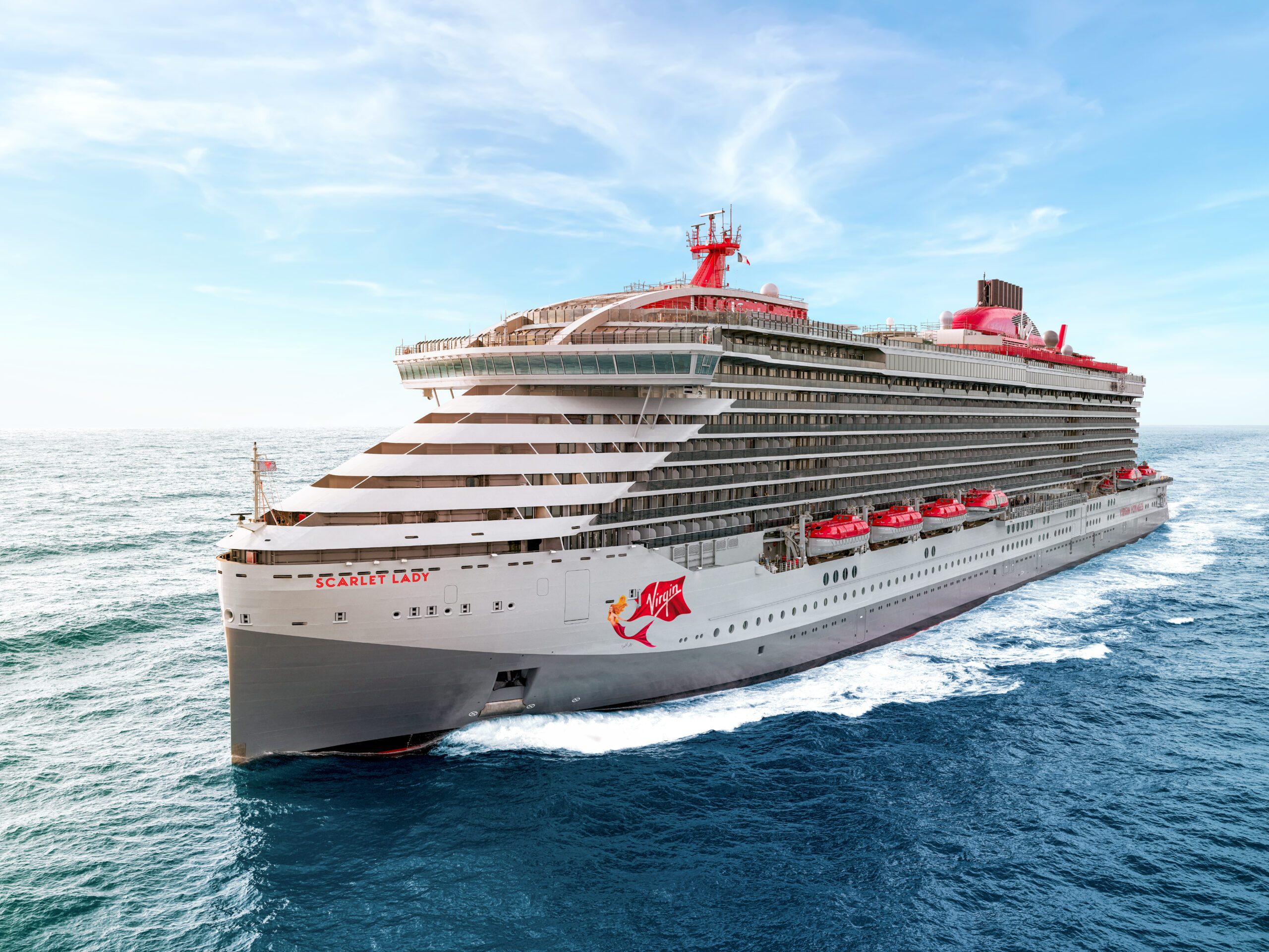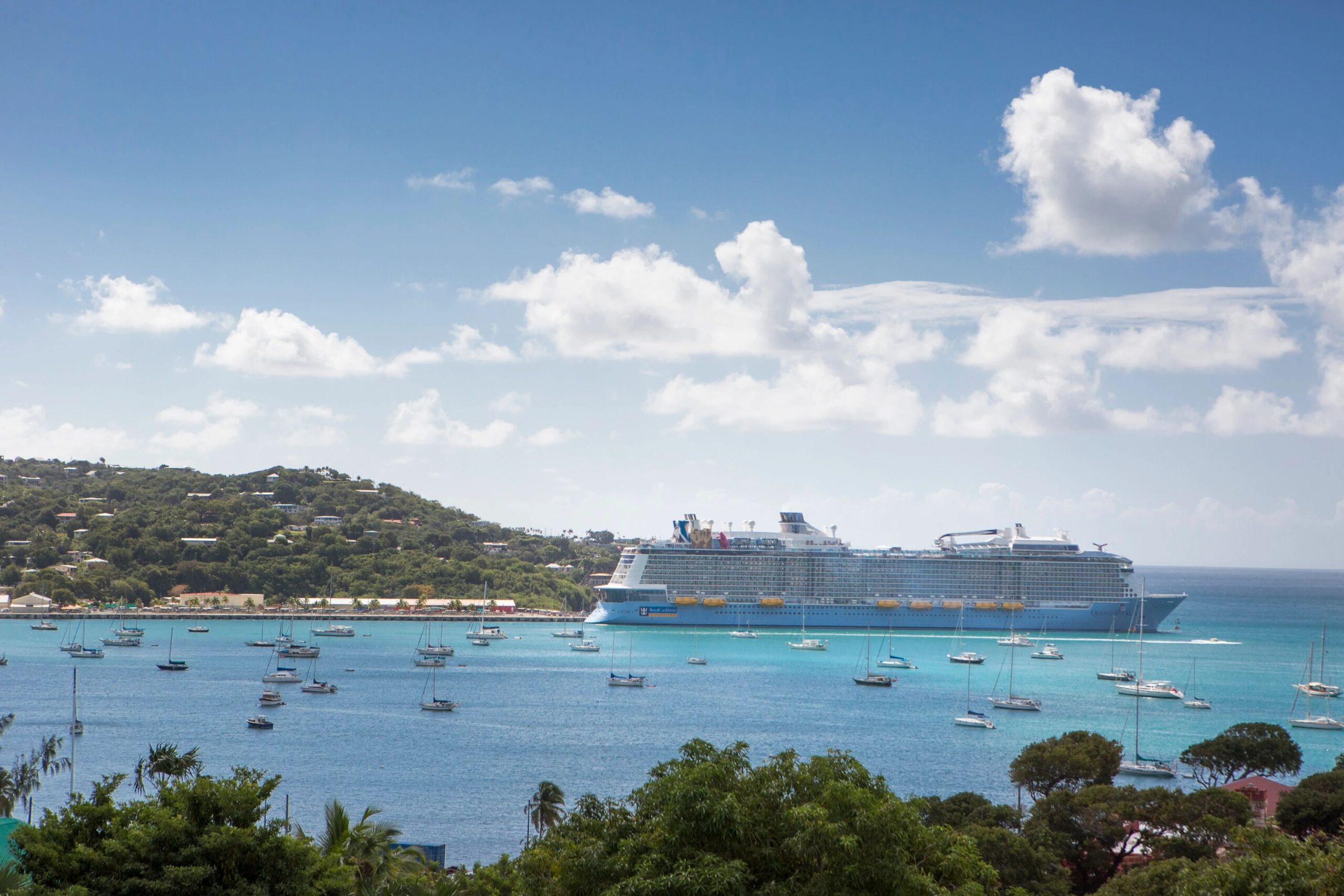Taking an Antarctic Cruise
Going on a cruise to the Antarctica is a fantastic way to explore one of the last untouched places on Earth. The white continent is known for its amazing landscapes, like tall glaciers, sparkling icebergs, and lively wildlife, including playful penguins and stunning whales.
As more people become interested in visiting this remote area, modern cruises make it easier for travelers to enjoy its beauty. This guide offers useful tips to help you get ready for the exciting experiences that await you on your trip to Antarctica.
The Allure of Antarctica
Antarctica is the most distant and least visited continent on our planet, making it a special place that draws in adventurous people and nature lovers. The attraction comes not just from its vast icy landscapes but also from the thrill of exploring such an untouched environment. With an area of about 548,203 square miles, there are countless sights and experiences to enjoy. From tall, icy mountains to huge ice shelves, every part of the Antarctic circle has its own unique beauty.
Antarctica’s isolation has helped keep its ecosystems intact, making it a safe haven for wildlife that thrives in harsh conditions. This interesting variety of life is mostly untouched, and seeing these animals in their natural settings is one of the most rewarding things you can do as a traveler.
What to Expect on an Antarctic Cruise
An Antarctic cruise is an exciting adventure with amazing views and unforgettable experiences. Your trip begins when you board the cruise ship at ports in South America, like Ushuaia in Argentina or Punta Arenas in Chile. After you set sail through the calm Beagle Channel, you’ll enter into Antarctic waters and cross the famous Drake Passage, known for its rough seas and unpredictable weather conditions. This part of the journey usually takes about two days and can be both thrilling and a little scary. Even though it can be bumpy, it’s a great chance to see seabirds like albatrosses and petrels.
Best Antarctica Cruise Lines
Choosing the right cruise line can make your trip to Antarctica even more enjoyable. Here’s a look at some of the different options:
| Cruise Line | Ship | Special Features | Activities | Best For |
|---|---|---|---|---|
| Quark Expeditions | Ultramarine | Authentic polar adventures with modern, comfortable ships | Kayaking, Paddleboarding, Glacier Hiking | An intimate polar adventure |
| Lindblad Expeditions | National Geographic Explorer | Underwater exploration and expert-led expeditions | Learn from Antarctic photographers and marine biologists. | Education and photography |
| Hurtigruten Expeditions | MS Roald Amundsen | Uses up to 20% less fuel than similar-sized ships | Explore science centers and observation decks | Eco-friendly travelers |
| Ponant Cruises | L’Austral and Le Boreal | Stylish rooms and gourmet dining | Zodiac rafts for up close wildlife encounters | Adventure and luxury |
| Silversea Cruises | Silver Cloud | High-end accommodations and fine dining | Small group wildlife encounters | All-inclusive cruising |
| Holland America Line | MS Oosterdam | Classic cruising experiences suitable for all ages | Dining options and activities for all ages | Families and groups |
| Princess Cruises | Coral Princess | Exciting onboard activities and one-of-a-kind excursions | Lectures and live cooking demonstrations | Well-rounded experience |
The Best Time to Cruise
Choosing the right time for your Antarctic cruise can make your trip even better. The cruise season usually runs from November to March, and each month has its own special features. Knowing what to expect in different seasons can help you get the most out of your adventure.
November: The Start of the Season
November marks the beginning of Antarctic Spring, showing beautiful new ice and snow. This is a great time for photographers because the ice formations and clean landscapes create stunning pictures. Penguins start nesting, and seabirds begin their courtship rituals. The thick ice adds an exciting challenge as ships travel through the icy waters.
December to January: Peak Season
December and January are the peak months of the season, coinciding with the summer in the Southern Hemisphere. During this time, temperatures range from 28°F to 46°F, and there are nearly 20 hours of daylight, giving you plenty of time to explore. Wildlife is very active, with many penguin chicks hatching and seal pups appearing along the shores. The ice has melted enough to allow easier access to landing spots, and the skies are typically clear. This is often considered the best time for seeing wildlife, making it a popular choice for travelers.
February to March: Late Summer
In February and March, as the ice continues to melt, ships can go further south to explore the Antarctic Peninsula. This late summer period is great for whale watching, as orcas and humpback whales feed in the rich waters. With penguin chicks becoming more active, visitors have fantastic chances for wildlife photography and interaction. Even though temperatures start to drop, the smaller crowds make for a more personal and intimate experience for travelers.
Wildlife Encounters
Antarctica is a paradise for wildlife lovers, offering a unique chance to see animals that thrive in extreme conditions. The region is home to many species that have adapted to the harsh environment, making every encounter special.
Penguins
Penguins are among the most iconic animals in Antarctica. Visitors can see large colonies of Adelie, Chinstrap, and Gentoo penguins waddling across the ice, diving into the cold ocean, and taking care of their chicks. The Gentoo penguin, with its white stripe on its head, is known for being curious and playful. The Emperor penguin is the largest species and is the only one that breeds during the cold winter, showing its amazing adaptability.
Penguins have interesting social lives. They live in large groups and often use their voices to identify their mates and chicks. Watching their courtship rituals and how they care for their young gives a fascinating look into their social behavior.
Seals
Seals are another highlight of Antarctica’s wildlife. Weddell seals, which are gentle and friendly, can often be seen resting on the ice or swimming in the icy waters. The powerful Leopard seal is a top predator in the region, known for its sharp teeth and fast swimming. Crabeater seals mostly eat krill and play an important role in the Antarctic food web, while the huge Elephant seals, which can weigh over 4,000 pounds, are known for their loud calls and size.
Many seals can be spotted lounging on the ice, and their playful behavior delights visitors. During mating season, the sounds of male seals fill the air, creating a unique atmosphere.
Whales
The waters around Antarctica are full of marine life, making it a great place for whale watching. Humpback whales are famous for their incredible leaps and beautiful songs, while orcas, or killer whales, swim through the icy seas looking for food. Spotting these magnificent creatures gives you amazing photo opportunities and a better appreciation for their beauty.
While observing whales, it’s important to keep a safe distance to avoid bothering them. Guides often make sure that whale watching is done responsibly, letting travelers enjoy the experience while keeping the animals safe.
Birds
Antarctica is also home to many seabirds, including the impressive Wandering Albatross, which can have a wingspan of up to 12 feet. These birds are very well-suited to life at sea, and watching them glide over the waves is a mesmerizing sight.
With many different bird species in the area, birdwatching trips give you great views and a chance to learn how these birds survive in harsh conditions. Observing their behaviors adds to the wonder of your Antarctic adventure.

Environmental Considerations
The Antarctic continent is one of the last untouched ecosystems on Earth, so it’s important for travelers to be responsible and informed. As more people visit this amazing region, understanding how tourism can affect the environment is crucial. Here are some key points for sustainable travel in Antarctica, including important information about climate change, scientific research, and the Antarctic Treaty.
Responsible Tourism Practices
Many cruise lines are adopting eco-friendly practices to reduce their impact on the environment. When choosing a cruise, look for operators that use hybrid or electric ships since they produce fewer emissions and have less environmental impact. Also, choose companies with good waste management systems that ensure trash is disposed of properly, which helps keep Antarctica clean.
Another important part of responsible tourism is limiting the number of visitors at sensitive sites. Many cruise companies work with the International Association of Antarctica Tour Operators (IAATO) to set visitor limits and guidelines that promote sustainable travel. By choosing companies that follow these standards, you help protect the Antarctic ecosystem.
Conservation Initiatives
Several cruise lines team up with conservation groups to support research and protection efforts in Antarctica. These partnerships often focus on studying climate change and wildlife. As a traveler, you can join citizen science projects where you help collect important data that scientists need to understand environmental changes.
For example, you might monitor penguin populations, track seal movements, or record weather patterns. By participating in these projects, you contribute to vital conservation work and learn more about the challenges facing this incredible region.
Climate Change Awareness
Antarctica plays a key role in the Earth’s climate by holding large ice sheets that help control global temperatures and sea levels. However, climate change is causing these ice sheets to melt at a faster rate, leading to rising sea levels and other environmental changes. Scientists warn that if the West Antarctic Ice Sheet collapses, it could raise sea levels significantly, affecting coastal areas around the world.
By learning about these issues before your trip, you can help spread awareness about climate change and its effects on Antarctica. Sharing what you learn with fellow travelers, friends, and family is a great way to raise awareness and promote the importance of protecting our planet.
The Antarctic Treaty
The Antarctic Treaty, signed in 1959 and effective since 1961, is an important agreement that keeps Antarctica for peaceful and scientific purposes. It bans military activities and mineral mining while promoting international scientific cooperation. When visiting Antarctica, it’s important to respect the principles of the Treaty to help protect the continent’s unique ecosystems.
Understanding the Treaty’s importance will help you appreciate the region more and inspire you to support its preservation.
Leave No Trace Principles
Follow “Leave No Trace” principles during your journey. Stick to marked paths when hiking, and make sure to dispose of your trash properly. Take all personal items with you instead of leaving them behind. This is essential for protecting Antarctica’s fragile ecosystems and ensuring that future visitors can experience its beauty.
Also, be careful with wildlife. Observe animals from a safe distance, and do not feed or disturb them. Keeping your distance helps maintain their natural behaviors and keeps them healthy.
Educate Yourself and Others
Before your cruise, learn about the environmental challenges Antarctica faces, such as climate change and tourism impacts. Read books, watch documentaries, or check out reputable websites to gain valuable knowledge. Sharing what you learn with other travelers can raise awareness about sustainable practices and encourage everyone to help protect this stunning landscape.
Participating in discussions or workshops offered by cruise lines or conservation groups while on board can also deepen your understanding and connection to the environment. Engaging with experts will equip you with the tools to advocate for conservation long after your trip.
Preparing for a Cruise to Antarctica
Getting ready for a cruise to Antarctica requires some planning to ensure you have a safe and enjoyable experience. Here are some important steps to help you prepare for your exciting adventure to this amazing destination:
Book Early
Antarctica cruises fill up fast, especially from November to March when the weather is milder and wildlife is more active. It’s best to book your cruise early to get your preferred dates and cabin type. Booking several months to a year in advance gives you more choices for your trip.
Gather Necessary Travel Documents
Make sure you have all the necessary travel documents before your trip. This usually includes a valid passport. Check if you need any visas for countries you’ll pass through, like Argentina or Chile. It’s a good idea to keep copies of your travel insurance policy, cruise confirmation, and any medical documents handy.
Review Packing Lists
Bringing the right gear is crucial for your comfort and safety in Antarctica. Check the packing list from your cruise line, but generally, you should include:
Warm layers
Wear thermal base layers to stay warm, an insulating mid-layer like fleece, and a waterproof outer layer for wind and moisture.
Waterproof boots
Insulated and waterproof boots are important for walking on the ice and keeping your feet warm and dry. Make sure they fit well since you’ll wear them for long periods.
Accessories
Bring a warm hat, gloves that allow for finger movement, a scarf or neck gaiter, and sunglasses (the sun can be bright and reflected off the ice).
Binoculars and Cameras
Pack binoculars for wildlife watching and a good camera to capture the beautiful scenery. Don’t forget extra batteries and memory cards, as you will likely take many photos.
Prepare for Sea Conditions
The Drake Passage can be rough and might make some travelers feel seasick. Consider bringing motion sickness medications like pills or patches. Test these at home to see how they work for you. Ginger tea or ginger candies can also help settle your stomach during the crossing.
Stay Healthy
Before your trip, make sure you’re in good health. Talk to your doctor about any vaccinations you may need and ask about medications for altitude sickness if you plan to hike. It’s smart to have a basic first-aid kit with items like band-aids, antiseptic wipes, pain relievers, and any personal medications. Also, think about getting travel insurance that covers visits to remote areas.
Learn About the Region
Get to know the history, geography, and wildlife of Antarctica before your journey. Understanding this unique environment will make your experience even better. Read books, watch documentaries, or listen to podcasts about Antarctica and its wildlife. This knowledge will help you appreciate what you see during your cruise.
Prepare for Activities
Look into the activities offered on your cruise. Many trips include fun excursions like kayaking, snowshoeing, or guided hikes. If you want to join these activities, check if you need special gear. Some items may be available for rent on the ship, but if you have favorite items, bring your own. Also, ask if there are any extra costs for certain excursions so you can budget accordingly.
Plan for Connectivity
Be ready for limited Wi-Fi and cell service while in Antarctica. Download any important apps, maps, or entertainment to your devices before the cruise, especially if you want information while you are on the ship. Consider downloading audiobooks or movies for entertainment during your free time.
Be Open-Minded and Flexible
The weather in Antarctica can change quickly, so your plans may need to change, too. Be prepared for activities to be delayed or adjusted. Keeping a positive attitude and being flexible will help you enjoy your adventure, even if things don’t go as planned. Part of the excitement of traveling to a place like Antarctica is experiencing the unexpected.
Stay Connected with Fellow Travelers
Consider joining online groups or forums about Antarctic cruises before your trip. Meeting other travelers can provide useful tips and insights, and you might even make friends before you set sail. Many people share their packing lists, experiences, and what to expect, which can help you feel more prepared.
By following these steps to prepare for your cruise, you can ensure that you’re ready to enjoy the amazing beauty and unique experiences that Antarctica has to offer. Being well-prepared will make your journey in this incredible part of the world much more enjoyable. Safe travels!

Your Adventure Awaits
An Antarctic cruise is a special opportunity to explore one of the most remote and beautiful places on Earth. With amazing sights of icebergs and glaciers, along with exciting wildlife encounters, every moment in this polar paradise is unforgettable. By planning carefully and choosing responsible tour operators, you can have a life-changing experience while also helping to protect our planet’s fragile ecosystems.
While planning an Antarctic cruise takes some effort, the rewards are worth it. Whether you see a group of penguins, watch a whale jump out of the water, or simply enjoy the fresh, crisp air, Antarctica’s beautiful landscape will inspire and amaze you.
Think of this journey not just as a trip to the farthest point on Earth, but as a chance to appreciate how delicate and beautiful nature is. As you get ready for your Antarctic adventure, remember that The Fun Cruise crew is here to help. If you have questions or want to start planning your next amazing cruise to Antarctica, don’t hesitate to reach out to us. Our friendly team is ready to help you create an unforgettable journey that fulfills your sense of adventure and encourages you to share your experiences about protecting our planet’s last great wildernesses.
Start your adventure today by contacting The Fun Cruise Crew, and let’s make your dream of going to Antarctica a reality!



